The best gaming TV for 2024: TVs for PS5 and Xbox Series X
Find the best gaming TV for your PS5, Xbox Series X, PC or last-gen console
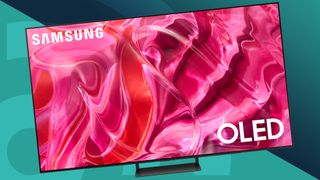
Looking for the best gaming TV is the same as hunting for the best TV for movies or streaming. You need to find a TV with fantastic image quality, a budget that's right for you and a size that fits into your living room. But there are also several specific gaming requirements you need to consider as well.
Here at TechRadar, when we're reviewing the best TVs, we're also testing their gaming features, to see which make the best gaming TVs. For example, gaming TVs need to have a low level of input lag, meaning there isn't a delay between you pressing a button and what you see on your screen. We test this ourselves, and look for input lag of under 15ms to suit the majority of gamers, or under 10ms for those who want the absolute best results.
Today's top TVs all have high-end gaming features built-in. Higher-end models, including many of the best OLED TVs, are usually excellent for gaming regardless of which one you choose. If you need to stay within a budget, you might find one in the best TVs under $1000 or the best TVs under £1000. But be careful, some of the cheaper models won't include the 120Hz screen or HDMI 2.1 connectivity that makes the most of the next-gen PS5 or Xbox Series X consoles.
The best gaming TVs on Black Friday
As Black Friday approaches, falling on November 29 in 2024, we're expecting a ton of deals on the best gaming TVs and the good news you don't have to wait until then to get your hands on a great offer, Black Friday TV deals are now live.
Tons of retailers have gone live with their sales, including Amazon UK and US. In the US, Walmart and Best Buy are likely to have excellent offers and in the UK, Currys, John Lewis and Very are just some of the retailers who have gone live with their sales.
You can expect a lot of fantastic discounts on the TVs included in this guide, and we're already seeing offers on the likes of the Hisense U7N, LG C4, Samsung Q80D and more -- including a few record-low prices. Although some deals will be at their best closer to the day, we know from last year that some record-low prices were before the day itself so its worth checking out our Black Friday TV deals guide from now on.
The quick list
If you want to quickly find the perfect gaming TV for you, try this list – you can also get a more in-depth write-up of any particular model by clicking the TV link!
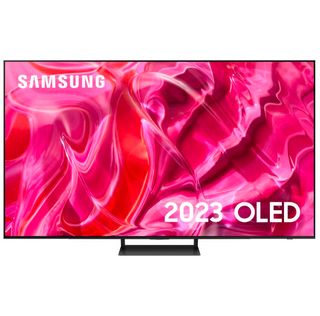
The best gaming TV for most people
The Samsung S90C is an OLED TV that's majorly brighter than others at the same price, and has almost every gaming feature going, with four HDMI 2.1 ports. No Dolby Vision gaming, though.
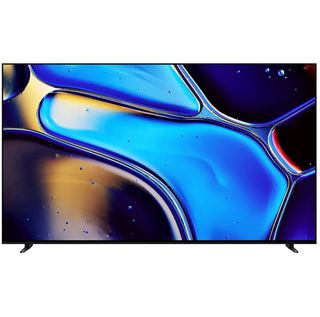
The best gaming TV for PS5
This a beautiful OLED with 'Perfect for PS5' tech, including 4K 120Hz and VRR support, plus a special HDR mode for PS5 unique to Sony TVs. It also has top-tier built-in sound.

The best budget gaming TV (US)
Dolby Vision gaming, 4K 120Hz (up to 144Hz) refresh rate, VRR and ALLM - the U7N has them all without breaking the bank. It's also available in the UK, but not as good value.
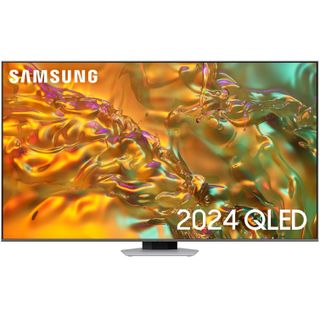
The best budget gaming TV (UK)
The Q80D carries four HDMI 2.1 ports, all with 120Hz and VRR support, and sits at an affordable price. It's available in the US as well.
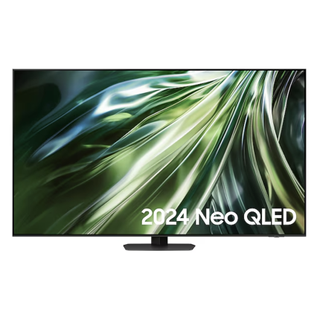
The best TV for lighter rooms
Want to play during the day in a bright room? This TV is brighter than most other TVs listed here, and it has four HDMI 2.1 ports with 4K 120Hz support.
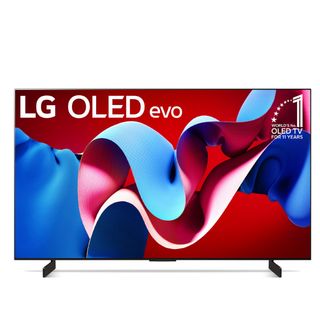
The best gaming TV for size options
The LG C4 has every gaming feature imaginable, and comes in more sizes than any other TV here, from 42 inches to 83 inches. It's less bright than the Samsung QN90D, though.
Load the next products...
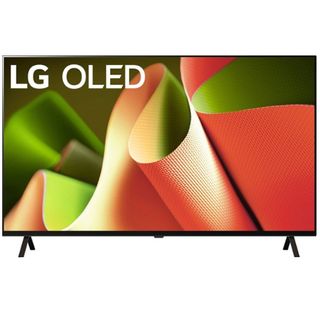
The best cheaper gaming OLED
Want the most affordable OLED with 4K 120Hz and VRR support? This is it. It's not as bright as the LG C4, but still carries an excellent range of gaming features – including four HDMI 2.1 ports.
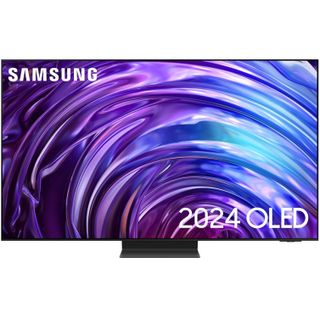
The brightest OLED TV
Utilizing QD-OLED for rich contrast and high brightness levels and anti-reflection technology to limit reflections mixed with a ton of gaming features, the S95D is one of the best gaming OLEDs around.
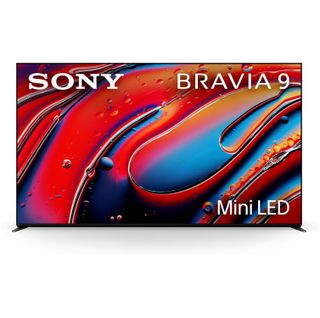
The best elite gaming TV for PS5
PS5-centric features inside one of the most sophisticated and stunning mini-LED TVs we've seen, with OLED-like contrast and stunning brightness. But it comes at a price.

I've been testing and reporting on TVs since 2017, but my experience writing about and reviewing screen technology stretches back to 2010. I love seeing all the latest TV releases as they come through our testing rooms, and I shape this guide by working with our reviewers and editors, to agree which TVs are the best fit for gaming, balancing features, sizes and price.
Recent updates
25 November 2024
Added in Buy it if boxes for each entry, explaining two reasons to buy and avoid each TV on this list
The best gaming TVs in 2024
Why you can trust TechRadar
The best gaming TV for most people
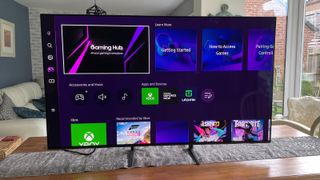
Specifications
Reasons to buy
Reasons to avoid
✅ You want QD-OLED gaming for cheaper: The Samsung S90C is still the cheapest way to get a QD-OLED TV, which gives increased brightness over standard W-OLED.
✅ You want a TV that's built for gaming: The S90C has extensive gaming features including 4K 144Hz, VRR, and ALLM, plus cloud gaming options.
❌ You want the brightest OLED for gaming: The S90C offers decent brightness, but the Samsung S95D is significantly brighter.
❌You want Dolby Vision for gaming or movies: Like all Samsung TVs, the S90C doesn't support Dolby Vision, instead opting for HDR10+ support.
The Samsung S90C is our pick as the best gaming TV for most people because it packs in just about every gaming feature you could need, with a next-gen OLED screen that's brighter than the likes of the LG B4 or Sony Bravia 8 (both lower in this list), and yet for a very similar price to those TVs. It's simply incredible value – in fact, it's also number 1 in our overall best TVs guide – and we were blown away by its actual picture quality in our review, saying "the longer I watched the S90C, the more I became aware of just how much cleaner, more natural and generally more refined its pictures were."
When it comes to gaming features, you've got four HDMI 2.1 ports, all supporting 4K 120Hz from consoles (or 4K 144Hz for PC games), and variable refresh rates. Samsung's gaming menus let you tweak how responsive it is and which features you want to use, which is great for tinkerers. We measured input lag at under 10ms, so it's as responsive as TVs get.
Lots of TVs here offer all this, though – what sets the S90C apart is its bright QD-OLED screen. It's about 30% brighter than the LG C3, and you can really see this – clouds pop in the sky, colors are richer, and it's generally more visible over reflections in a bright room. That's while still delivering inky OLED black tones, of course, and you'll benefit from these in both movies and games. It's a fantastic-looking TV.
It's also got better built-in sound than the LG C3. The only downsides to it are that it doesn't include Dolby Vision support (so, no DV gaming from Xbox Series X), there's no G-Sync for PC gaming, and that it only comes in three sizes. But we think that for the majority of people who aren't bothered by any of those, it's the best choice today.
Read the full Samsung S90C review
Best gaming TV for PS5
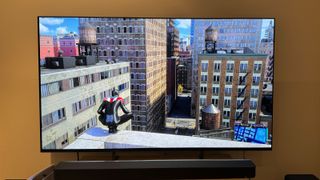
Specifications
Reasons to buy
Reasons to avoid
✅ You own a PS5: The Sony Bravia 8 has 'Perfect for PS5' gaming features including an auto HDR tone mapping mode that activates when a PS5 is connected.
✅ You want great built-in sound for your games: With accurate sound placement, impressive dynamics and clear speech, the Bravia 8 has one of the best built-in sound systems in the TV market.
❌ You want the fastest gaming TV: Although the Bravia 8's 12.8ms input lag time is decent, there are entries on this list that beat it.
❌You need multiple HDMI 2.1 ports: The Bravia 8 only comes with two HDMI 2.1 ports so those with multiple gaming consoles plus a soundbar should take note.
The Sony Bravia 8 is Sony's only new OLED for 2024, with the brand opting for mini-LED in its flagship Bravia 9 model instead. Although only offering some incremental upgrades over its predecessor, the Sony A80L, it still serves as the best option for PS5 owners thanks to its PS5-centric features.
The Bravia 8 comes with 'Perfect for PS5' features built-in, including a HDR tone mapping mode that activates when a PS5 is connected to tune highlights and shadows for the exact capabilities of this TV, so you better visibility in the brightest and darkest areas. It also supports 4K 120Hz, VRR and ALLM. It has an improved 12.8ms input lag time compared with the 16.5ms its predecessor produced (which is better than the lag we measured in our Sony Bravia 9 review too, despite that being the higher-end model).
But it's not just features where the Bravia 8 is a solid option. We were impressed by the Bravia 8's picture for gaming, noting how good its backlight control was and we said that when playing Marvel's Spider-Man 2 "Spidey’s suit and buildings exhibit clear shine where they’re being hit by sunlight". The Bravia 8's improved HDR brightness also helped give images a more vivid look.
Speaking of pictures, the Bravia 8 is also a fantastic companion for movies. The rich colors and pixel-perfect contrast give everything a dynamic pop on screen, adding an extra layer of vibrancy. Black levels are also superb, with dark details taking on a refined quality.
The Bravia 8 also delivers with its built-in sound, with plenty of immersion, accurate placement and an engaging feel. While its gaming features and performance may not be the best on the list, the Bravia 8 is still an excellent gaming option.
Read our full Sony Bravia 8 review
The best budget gaming TV in the US
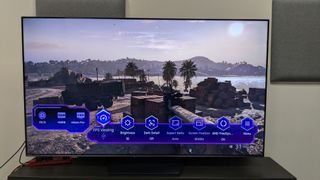
Specifications
Reasons to buy
Reasons to avoid
✅ You want a budget TV for gaming: The Hisense U7N is well equipped for gaming for its affordable price, with 4K 144Hz, VRR, ALLM and Dolby Vision gaming all featured.
✅ You want a TV that has a good picture for the money: The U7N's picture has great contrast, vibrant color and fine detail – it's sure to make graphics look good.
❌ You want the best picture: While it's picture is very good for the price, the U7N does suffer from backlight blooming and limited viewing angles.
❌You want immersive built-in sound: The U7N's sound is fine, thought it does feel narrow and lacks a real sense of immersion.
The Hisense U7N's stacked suite of gaming features is ideal for PS5 and Xbox Series X owners and it has a great quality mini-LED picture, all for significantly less than the other TVs on this list.
With 4K 120Hz (with 144Hz option), Dolby Vision gaming, VRR including AMD FreeSync Premium and Nvidia G-sync, ALLM and a Game Bar menu, the U7N has a near-complete list of gaming features you'd expect to find on more premium gaming TVs.
The U7N's picture has bright, bold colors but with no sacrifice of contrast and black levels, which is an impressive accomplishment for a budget mini-LED TV. Textures and details are refined and accurate, giving the picture plenty of depth. The U7N suffers from some backlight blooming and its contrast fades when viewed off-axis, but overall the U7N's picture is great and adds an extra layer to gaming.
Sadly, the U7N's sound quality doesn't quite match its picture, but its directional sound, solid bass, and clear dialogue will suit a lot of games, as we discovered testing with Battlefield V. Ultimately though, its narrow soundstage means a soundbar may be required.
Bang for your buck is at the core of the U7N. With prices sitting roughly at $800 for a 65-inch screen size, it is hard to argue against the performance and features it delivers for the price.
Read our full Hisense U7N review
The best budget gaming TV in the UK
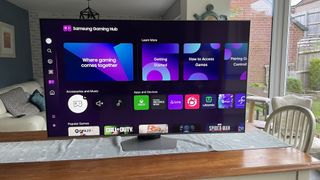
Specifications
Reasons to buy
Reasons to avoid
✅ You want a TV that feels more premium than its price: The Samsung Q80D delivers in a lot of areas and feels far more premium than its price suggests.
✅ You want a mid-range TV with a lot of gaming features: The Q80D has four HDMI 2.1 ports which support 4K 120Hz, VRR and ALLM and it also features Samsung's useful gaming hub.
❌ You don't want to adjust settings: To get the Q80D's very best picture quality we found that we had to make adjustments in the settings, particularly for color.
❌You want the very best gaming TV: While the Q80D is a superb gaming TV, it doesn't quite hit all the highs like the Samsung S90C, which sits at the top of this list.
The Samsung Q80D proves that you don't need to spend a fortune to get a comprehensive TV as it delivers a bright, colorful picture, a brilliant stock of gaming features and surprisingly good sound – all for less than you'd expect. Combine all that into one package and you get an excellent, affordable gaming TV.
The Q80D is equipped with four HDMI 2.1 ports, all of which support 4K,120Hz, VRR (including both HDMI and AMD FreeSync Premium Pro varieties) and ALLM. Thankfully, the Q80D backs up these features with performance, with an ultra low 9.8ms input lag time that we described in our review as "exhilaratingly responsive".
But, it's not just gaming performance where the Q80D triumphs, as it delivers a dynamic, colorful picture that's superb for both games and movies. We noted in our review that it offers surprisingly rich black levels and contrast better "than any other LCD TV I can think of in its class". It also displays textures in a sharp, yet natural style that gives pictures a lifelike quality. The Q80D's colors are also top-notch once you've done some setup.
Sound can often be hit-or-miss with TVs, especially more budget models, but this isn't true for the Q80D. It won't dethrone the best TVs for sound, but the Q80D's built-in sound is impressive for its price range. It has a large soundstage, excellent sound placement and great Atmos staging – plus good bass levels and clear speech. Sound also extends beyond the screen, giving you an even better sense of immersion.
The Q80D carries the triple threat of picture, features and performance that make a great gaming TV. It's easily the stand-out gaming TV in its price range.
Read our full Samsung Q80D review
The best gaming TV for lighter rooms
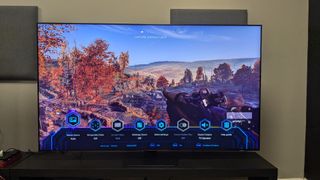
Specifications
Reasons to buy
Reasons to avoid
✅ You want a TV for daytime gaming: The Samsung QN90D's high peak and full-screen brightness and anti-reflection screen make it perfect for gaming in bright rooms.
✅ You want a vibrant, detailed picture: The QN90D uses mini-LED to deliver bold colors, bright HDR highlights and refined details, which will look great for your games and movies.
❌ You want the best value gaming TV: The QN90D is excellent, but the Hisense U7N and Samsung Q80D are arguably better value when it comes to price vs performance.
❌You want the best Samsung TV for gaming: The QN90D is a great TV, but the Samsung S90C at the top of this list is still the best Samsung TV for gaming.
Gaming in a bright room can be a challenge, especially for OLED and lower-brightness LED TVs, with screen glare having a major effect. But a TV also needs to provide all the gaming features you need while also being able to handle bright rooms: enter the Samsung QN90D.
The QN90D comes stacked with gaming features, including 4K 144Hz, VRR (including AMD FreeSync Premium Pro and HGiG) and ALLM across four HDMI 2.1 ports. It also comes with Samsung's Gaming Hub, an easy-to-access space for gamers to locate everything gaming-related such as cloud-based apps from Xbox, Luna and more. We found during testing that the QN90D handled graphically intense sections ably, with FPS like Battlefield V running smoothly.
The QN90D's vibrant picture also stands out for gaming. Its high brightness - both peak and full-screen - not only gives colors a vivid look, but also allows the QN90D to compete with high levels of ambient light. The QN90D's anti-glare screen also lets it deliver rich contrast and deep black levels in bright rooms for a well-balanced picture. Textures and details are lifelike, and, as we found in our testing, pictures with HDR have a well-defined, but natural look.
The QN90D is available in a wide range of sizes, from 43 to 98 inches. So, whether you're gaming in the bedroom or in a home theater room, there is a size that will suit. We've only tested brightness on the 65-inch model, but the QN90D is likely to provide more consistent brightness than most mini-LED TVs across its entire range.
Read our full Samsung QN90D review
The best gaming TV for size options
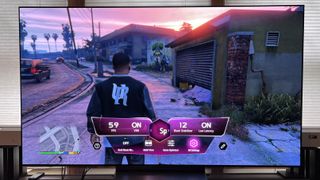
Specifications
Reasons to buy
Reasons to avoid
✅ You want lots of size options: Whether gaming in the bedroom or in the living room, the LG C4 is available in 42-83-inch sizes to suit all environments.
✅ You want a superb OLED TV for gaming: The C4 has a low 9.2ms input lag time plus stacks of gaming features such as 4K 144Hz, VRR, ALLM and Dolby Vision gaming, all on four HDMI 2.1 ports.
❌ You want the very brightest OLED: The Samsung S95D and Samsung S90C on this list both provide brighter OLED TV options.
❌You want the cheapest OLED for gaming: The LG B4, further down this list, is the cheapest gaming OLED TV available.
The LG C4 is an excellent all-around TV for gaming, movies, and just about anything else. It has a new Brightness Booster feature that lets it effectively compete with the Samsung S90C sitting at the top of our list as best overall gaming TV, though that model remains our top choice owing to its mix of performance and features and currently lower price.
Brightness Booster on the LG C4 is made possible by a new Alpha 9 AI Processor 4K Gen7 processor that also improves audio from the TV’s built-in 2.2-channel speakers with virtual 9.1.2-channel upmixing. The Dolby Vision, HDR10, and HLG HDR formats are all supported, and there’s a new Dolby Vision Filmmaker Mode preset that gives you an accurate Dolby Vision HDR picture without having to muck with picture settings and menus.
LG’s 2024 TVs including the C4 are the first models to be 144Hz-certified by Nvidia, which is great news for PC gamers. Xbox Series X and PS5 console owners will appreciate the C4’s four HDMI 2.1 ports with 4K 120Hz support, along with VRR, and ALLM. Cloud gaming is also well represented on the LG C4, with GeForce Now, Amazon Luna, Utomik, Blacknut, and Boosteroid apps available in the Games Quick Card on the TV’s webOS 24 smart interface.
While the LG C4 is both sufficiently bright and has an anti-reflection screen for daytime viewing and gameplay, the Samsung QN90D, one of the best mini-LED TVs, sitting one step up on this list provides an even brighter picture, and it’s available in the same wide range of screen sizes as LG’s C4 OLED.
Read the full LG C4 review
The cheapest gaming OLED TV

Specifications
Reasons to buy
Reasons to avoid
✅ You want an affordable OLED for gaming: The LG B4 is the cheapest way to get a 2024 OLED TV – and you'll still get great picture quality and features.
✅ You want a well-featured OLED for gaming: The B4 comes with four HDMI 2.1 ports with 4K 120Hz , ALLM and VRR support at a more affordable price than other OLED TVs.
❌ You want the best built-in sound: The B4's speakers are adequate, but you won't get the same sound quality you'd find in the Sony Bravia 8 or most Samsung models on this list.
❌You like a bright picture: Compared to all other TVs on this list, the LG B4 has limited brightness, topping out at just over 650 nits.
OLED gaming doesn't have to be expensive, and this is proven by the LG B4 – the cheapest 2024 OLED TV you can buy. Despite its cheaper price, the B4 comes with plenty of features and a punchy performance that will keep gamers happy, especially with the introduction of its new features. The B4 is also available in a 48-inch size for the first time, perfect for gaming in bedrooms or smaller living rooms.
The B4 carries an improved list of gaming features over its predecessor, the LG B3, with four HDMI 2.1 ports for the first time. All of these ports support 4K 120Hz, Dolby Vision gaming, VRR (AMD FreeSync and Nvidia G-Sync accounted for), HGiG and ALLM. It also delivers an ultra-low 9.2ms input lag time when Boost mode is activated in the Game Optimizer menu.
In our review of the B4, we were impressed not only by its gaming chops, calling it "an excellent gaming TV for price" but also by its picture quality. We found that the Dolby Vision Filmmaker Mode provided accurate presentation of color and contrast when watching Godzilla Minus One and also delivered excellent black levels throughout viewing. We were even impressed with its upscaling of non-4K sources, describing these images as "crisp with great detail."
It's not all perfect for the B4, as its lower brightness pales compared to most of the other TVs here, and its built-in sound is average, but if you're looking for a way to introduce OLED to your TV gaming setup and are on a budget, the B4 is your best choice.
Read our full LG B4 review
The best OLED gaming TV for brightness
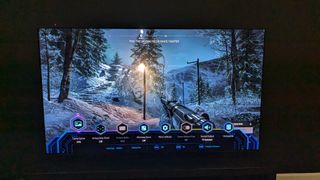
Specifications
Reasons to buy
Reasons to avoid
✅ You want a premium QD-OLED gaming experience: The Samsung S95D's picture is spectacular, with an anti-reflection screen to eliminate screen glare, and it comes with all the important gaming features we look for.
✅ You want a TV that looks good: With a razor-thin profile and 'floating' design, the S95D has the look of an ultra-modern, premium TV.
❌ You want the best value TV: The S95D's premium performance comes at a price, making it one of the more expensive TVs on this list.
❌You want the picture ready out-of-the-box: The S95D's picture is sublime, but some settings adjustments may be required to get things just right.
Thanks to new anti-reflection tech, the Samsung S95D drastically reduces reflections in bright viewing environments, meaning you can get QD-OLED quality picture during any daytime gaming. Black levels and colors are still rich even in the brightest of rooms, giving you the best possible graphics available.
In terms of gaming features, the S95D is stacked. Four HDMI 2.1 ports carry 144Hz refresh rate, VRR including FreeSync Premium Pro, ALLM and HGiG support. There's also the Game hub for any cloud gaming services from Luna, Xbox and more, which serves as a handy tool for gamers.
Gaming performance is also a highlight of the S95D, with a super low 8.9ms input lag time (sub 15ms is considered professional). It's effortlessly smooth and free-flowing gameplay, even in the most graphically intense moments. The S94D's built-in audio is also impressive enough, particularly with object tracking, to complete the overall gaming experience.
The S95D does come at a premium price that some may find too rich, but for those who can stretch their budgets, it's a premium OLED option that is ideal for those with a bright gaming environment.
Read our full Samsung S95D review
The best elite gaming TV for PS5
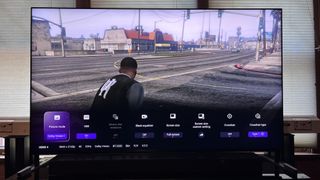
Specifications
Reasons to buy
Reasons to avoid
✅ You want a unique mini-LED TV: While its brightness and contrast are similar to other mini-LED TVs, it's the Bravia 9's OLED-level blacks that make it stand out in the mini-LED market.
✅ You want a premium PS5 experience: The Bravia 9's superb picture quality and Perfect for PS5 gaming features combine to make it the ultimate TV for your PS5.
❌ You want the most responsive gaming TV: The Bravia 9's 17ms input lag time is the highest of any TV on our list and falls just short of the 15ms that professional gamers look for.
❌You are on a budget: The Bravia 9's picture and performance come at a price that is even higher than many premium OLEDs.
The Sony Bravia 9 uses Sony's XR Backlight Master Drive with High Peak Luminance, which is a new twist on mini-LED tech that encompasses custom 22-bit LED drivers to offer significantly more refined local dimming, meaning best-in-class contrast for a mini-LED, and it's a fantastic improvement to pictures for both movies and gaming.
The Bravia 9 features PS5-exclusive features including Auto HDR Tone Mapping and Auto Genre Picture Mode when it detects a PS5, displaying the best picture possible. It also comes with 4K 120Hz, VRR (including Nvidia GSync but sadly not AMD FreeSync), Dolby Vision gaming and a Game Bar to make easy settings adjustments while gaming. While we did measure a higher-than-expected 17ms input lag time (most premium sets around this price have been sub-10ms), combining the Bravia 9's features with its picture quality makes for an excellent gaming experience as long as you're not a literal pro gamer.
Speaking of picture quality, the Bravia 9's is simply stunning. The sophisticated mini-LED tech means OLED-level blacks with rich contrast and exceptional brightness - 2,280 nits in standard mode in fact - that will be perfect for daytime viewing. Crucially, there's also little-to-no light bleed in high contrast images, something that is a regular issue for other mini-LED TVs.
In terms of built-in audio quality, the Bravia 9 follows in a long line of Sony sets that prioritize sound as well as picture. Acoustic Multi Audio+ creates an excellent sense of space and immersion and Voice Zoom 3 boosts dialogue levels during intense scenes. There's also even more unlocked when the Bravia 9 is paired with a Sony soundbar, including Acosutic Center Sync (using the Bravia 9's speakers as a bonus center channel) and 360 spatial audio mapping (creating phantom speakers for even more sound).
The Bravia 9 is undoubtedly pricey and is available in more limited sizes in the UK (75 and 85-inch only) but for those looking to go big with their gaming (especially PS5 owners), this is one of the best premium options you can get.
Read our full Sony Bravia 9 review
How to choose the best gaming TV
How to choose the best gaming TV
There are a few key things to consider when you're choosing the best gaming TV for you.
Game Mode and low latency: Latency is the time between when an image is sent by the console and when it actually shows up on the screen. Modern TVs do a lot of clever processing to images to make them look better, but this takes time, which means there's a delay between you pressing a button on a controller and seeing the result – that's not ideal in a fast-paced game. All TVs now have a Game Mode, or something with a similar name, which reduces the processing, meaning lower latency.
HDMI 2.1: The latest and greatest HDMI connector tech, which includes support for ALLM, 4K 120Hz, and VRR.
ALLM: Auto Low Latency Mode is a newer feature where consoles can tell the TV to switch into Game Mode automatically – you won't have to set it with a remote.
4K 120Hz: This means a TV can refresh its screen up to 120 times per second, while still displaying at 4K resolution. Cheaper TVs are more likely to refresh at 60 times per second. You may also find some mid-range 4K TVs that refresh at 120Hz, but don't include HDMI 2.1, so they can only show Full HD resolution at 120Hz, or 4K at 60Hz.
VRR: Variable Refresh Rate is a feature that means the TV will synchonize the speed at which is refreshes the screen with whatever the current framerate of your game is. This means games don't have to stay locked to 30, 60 or 120fps to avoid screen tearing, which means they can offering better graphics. There are three types of VRR: HDMI forum; FreeSync and G-Sync.
HDMI forum VRR: This is supported by both the PS5 and Xbox Series X, and is an official part of the HDMI 2.1 spec. Most TVs with HDMI 2.1 support it.
AMD FreeSync: This is supported by the Xbox Series X and AMD graphics cards on PC. It's pretty common to find on TVs, including on some without HDMI 2.1.
Nvidia G-Sync: This is supported by Nvidia graphics cards on PC, but not by consoles. It's pretty rare to find on TVs, too, but it does happen.
Is a TV good for PC gaming?
We've established that gaming TVs are fantastic companions for your games consoles, but what if you play on PC? There's certainly an appeal in playing graphically intensive PC games on a big screen, but how does that play out in practice?
While a gaming TV can certainly substitute for a PC gaming monitor, you'll need to make sure your PC can handle the resolution. 4K screens are naturally more taxing on your PC's resources due to them offering much higher image quality.
If your PC is up to scratch, you'll get a smooth experience at 4K on a bigger screen. If not, you may have to switch your game to a lower resolution like 1440p or 1080p, in which case your gaming TV might not be able to handle the upscaling needed very well. This will result in a blurrier than intended image thanks to the size of the TV compared to a monitor.
It's a double-edged sword, then, and almost entirely dependant on how powerful your PC is. If you've got the high-end parts to make it happen, then PC gaming on a TV can produce wonderful results. If it's not quite there, then you're better off playing on a smaller monitor able to output a sharper, cleaner image.
How much is a gaming TV?
TVs suited for gaming vary wildly in price, depending on a wide number of factors. 4K TVs are incredibly common these days, and can be bought for as little as $300 / £300 / AU$450. Of course, you're getting very basic features with a TV at this price, with a size of around 43 inches, and almost certainly lacking 4K 120Hz support, and variable refresh rates.
But these features can be found on TVs that aren't too expensive, often available for under $800 / £900 / AU$1,200 in smaller sizes. If you want gaming feature for next-gen consoles, you need to assume you'll pay something starting in that region.
Do I need an 8K gaming TV?
The short answer? No.
While 8K games are absolutely on the horizon, and the PS5 / Xbox Series X console come with this capability baked-in, there's no immediate need to get an 8K TV for gaming. Gaming devs are still getting to grips with 4K performance, and in general other picture specifications like a high frame rate (60fps, 120fps) are going to be more important in the coming years.
In 2025, maybe it'll be a different answer, but for now we think the 4K gaming TVs listed above will do you just fine.
How we test the best gaming TVs
When we test the best gaming TVs, we’re mainly looking at gaming performance and related features that enhance gaming. For these tests, we apply the same criteria used in our reviews such as picture and audio quality based on objective and subjective tests.
For gaming TVs, we use a gaming console (mainly an Xbox Series X although this can vary based on the reviewer) to test motion performance with graphics, analyzing latency and response time. We put the TV in its Game Mode during these tests to keep it consistent across each model and to maximize the gaming experience.
We also look for features such as VRR and 120Hz refresh rate to test their effectiveness. Not all the best gaming TVs have to provide these features, but it’s something we take into consideration during testing. To test latency added by the TV’s processing, we use a Leo Bodnar 4K HDMI Input Lag tester, with that measurement taken in the set’s Game Mode.
We also test picture quality with movies and TV shows, cycling through preset picture modes such as Standard and Movie to determine which is the most accurate. We’ll then play a variety of sources including 4K Blu-ray, 4K and HD streaming, and lower-res formats such as broadcast TV and DVD to evaluate the TV’s upscaling.
Another important area we test is how well a gaming TV handles dark tones, looking particularly at black uniformity (the ability to evenly display black across the screen) and its overall contrast.
We use specialized equipment, including a test pattern generator and colorimeter, to take measurements for our objective tests, with the results recorded in Portrait Displays’ Calman calibration software.
To test a TV’s overall brightness, we use various-sized white windows, including 10% and 100%. A 10% window provides a standardized indication of the peak brightness that can be expected, whereas 100% shows how consistently it can display a bright image such as a colorful video game. These tests also determine how a TV handles screen reflections, which is crucial for daytime gaming.
The color reproduction tests we make with both HDR and SDR sources are important to see how faithfully and accurately a TV can display source material, and they also indicate the maximum color gamut available. We additionally test for grayscale accuracy, looking at how consistently a TV tracks gray tones on the screen from black to white.
We aim to keep conditions consistent across our tests, but it’s worth noting that some writer setups do vary. We always strive, however, to use equivalent equipment and procedures so our results are comparable across TVs.
You can read more in-depth about how we test TVs at TechRadar at that link, and in particular for this guide, how we test TV input lag.
The latest updates to this best gaming TVs guide
25 November 2024
Added in Buy it if boxes for each entry, explaining two reasons to buy and avoid each TV on this list
14 November 2024
Added a Black Friday TV deals section, explaining the deals we're likely to see on the TVs from this guide.
Read more updates
18 October 2024
Replaced the Sony A80L with the Sony Bravia 8, and the LG B3 with the LG B4, based on our testing.
19 September 2024
Replaced the Samsung QN90C with the Samsung QN90D as 'best for bright rooms'.
20 August 2024
Replaced the Samsung Q80C with the Samsung Q80D for 'best budget gaming TV (UK)
23 July 2024
Added the Sony Bravia 9 as 'best elite TV for PS5'
28 June 2024
Removed Amazon Omni QLED as 'best cheap TV'. Removed Hisense U8K as 'best cheaper 120Hz TV in the US'. Samsung Q80C became 'best budget (UK)' instead of 'best cheaper 120Hz gaming TV in the UK'. Added Hisense U7N as 'best budget (US)'.
3 June 2024
Replaced the LG C3 with the LG C4 as "The best for size options" due to improved picture brightness and gaming features.
3 May 2024
Replaced the Samsung S95C with the S95D as best super bright OLED, thanks to anti-reflection tech and higher peak brightness levels.
28 March 2024
Added test result charts for all TVs, to make them easier to compare.
27 February 2024
Added to the 'How We Test' section with a more in-depth breakdown of how our testing of the TV in this list works.
24 January 2024
Updated the FAQ's section with 'What new gaming TVs are coming in 2024?' discussing some of the latest models we're keeping our eyes on.
15 December 2023
Replaced Samsung Q80B with Samsung Q80C for 'best cheaper 120Hz (UK)' due to stock levels.
6 October 2023
Added the Amazon Fire TV Omni QLED as best cheap gaming TV, Hisense U8K and Samsung Q80B became 'best budget 120Hz gaming TV' for US and UK respectively. LG B3 replaced LG B2 for best budget OLED due to stock levels. Swapped Samsung QN85B for Samsung QN90C as best for bright rooms, due to low stock levels, and the Hisense matching the QN85B for brightness.
22 August 2023
Added the Samsung S90C as our new number one recommendation, based on our review and discussion of its merits compared to the LG C3. Added the LG C3 as the best option with a broad range of sizes. Replaced the Sony A80K with the newer Sony A80L.
13 July 2023
Checked all products against our latest reviews.
26 June 2023
Added this 'latest updates' section, to help readers see what recent changes have been made. Checked the products in the list against our latest reviews.
20 April 2023
Changed the structure of the guide to make it easier to find particular models that suit different needs, and to navigate to those models. Added Samsung S95C to the list, and removed some models.
6 March 2023
Updated the list to reflect current TV options, including adding the Samsung QN95B.
Get the best Black Friday deals direct to your inbox, plus news, reviews, and more.
Sign up to be the first to know about unmissable Black Friday deals on top tech, plus get all your favorite TechRadar content.

Matt is TechRadar's Managing Editor for Entertainment, meaning he's in charge of persuading our team of writers and reviewers to watch the latest TV shows and movies on gorgeous TVs and listen to fantastic speakers and headphones. It's a tough task, as you can imagine. Matt has over a decade of experience in tech publishing, and previously ran the TV & audio coverage for our colleagues at T3.com, and before that he edited T3 magazine. During his career, he's also contributed to places as varied as Creative Bloq, PC Gamer, PetsRadar, MacLife, and Edge. TV and movie nerdism is his speciality, and he goes to the cinema three times a week. He's always happy to explain the virtues of Dolby Vision over a drink, but he might need to use props, like he's explaining the offside rule.
- Al GriffinSenior Editor Home Entertainment, US
- James DavidsonTV Hardware Staff Writer, Home Entertainment